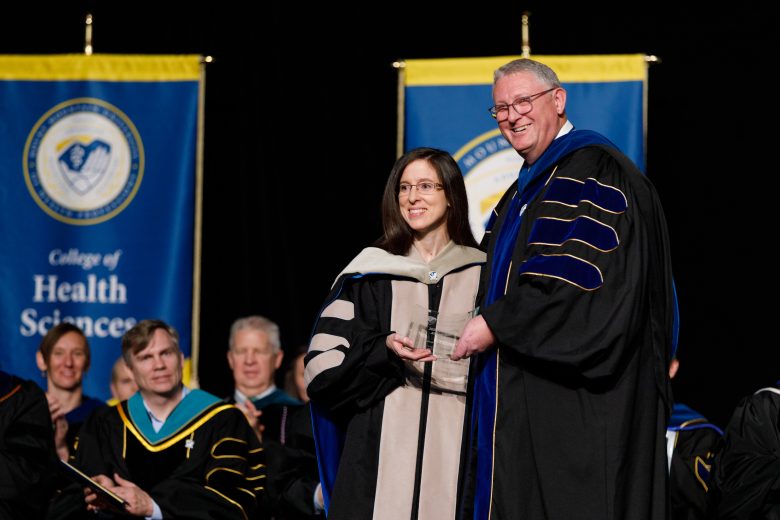
Women play a central role in the healthcare industry. According to a Bureau of Labor Statistics’ study in 2021, 77.6 percent of the more than 21 million healthcare workers in the U.S. were female.¹ With women occupying the majority of interactive and front-line positions, their influence as providers and innovators is foundational, shaping how today’s patients experience healthcare services the nation-over.
A History of Influence
Women have been revolutionizing healthcare for decades. During WWI, innovators like Mary Mcmillan worked to train physical therapists to assist in the rehabilitation of returning soldiers. Following the war, in 1921, Mcmillan became the first president of what is now known as the American Physical Therapy Association (APTA).²
Florence Nightingale, sometimes called “The Mother of Nursing,” is another example of the positive effects women make on healthcare. While serving in a military camp of British soldiers during the Crimean War, Nightingale determined that poor, unsanitary hospital conditions were contributing to the high mortality rate of the soldiers. She worked to improve the conditions, ultimately reducing the mortality rate from 60% to less than 3%.³ Her practices and techniques are still used today at medical facilities around the world.
What Women Offer
While quality services may be administered by healthcare providers of any gender, women healthcare professionals bring their distinct perspectives to the table.
“Without female healthcare providers viewing healthcare through their unique lenses, care can be compromised,” said Sandy Pennington, PhD, RN, and former Program Director, Provost, Dean, and Chief of Staff to the president at Rocky Mountain University (RMU). “Women see things differently, and that perspective is critical to a holistic approach to patient care and to life.”
“We need diversity in thought and background,” said Malissa Martin, EdD, ATC/L, Interim Executive Vice President for Academic Affairs & Provost. “That is how an organization functions best; it needs a variety of voices that are heard and considered.”
In addition to promoting diverse ideas and unique solutions, a female perspective makes a notable difference in clinical healthcare as well.
“We have collected significant data regarding gender differences in symptom presentation,” Pennington said. “For example, when looking at heart disease, care management varies due to women’s heart disease symptoms being different than the symptoms men experience.”
The Need for Change
Despite occupying the majority of entry-level and management positions in healthcare, women only account for 30% of c-suite executive positions in the industry.⁴ With this divide in leadership, many are voicing the need for more women in executive-level leadership roles.
“We currently don’t have enough women at certain levels,” Martin said. “We need more female role models to nurture those who are forthcoming, so young girls can look and say, ‘I could do that.’”
In the push for opportunity and representation, there are often conflicting views that oppose the need for change.
“The best approach to challenge opinions or preconceived notions is with knowledge of best practices and the best available evidence,” Pennington said. “Working across divides with reliable data is essential to establish whether an opinion is based in fact.”
In the push for opportunity and representation, it is essential to remember that big change requires individual efforts.
“Closing gaps in healthcare and healthcare education is a universal responsibility,” Pennington said.
In an ever-changing industry where diverse ideas and perspectives are the key to developing solutions, it is inevitable that women will play a key role in the future of healthcare.
For the millions of women who work in healthcare today, they may see their efforts as just another day on the job. Yet in an ever-changing industry, where diverse ideas and perspectives are the key to developing working solutions, women’s contributions will play an essential part in creating a brighter future.
____________________________________________________________________________________________________________________
References
¹ “Over 16 Million Women Worked in Health Care and Social Assistance in 2021.” U.S. Bureau of Labor Statistics. U.S. Bureau of Labor Statistics. Accessed March 10, 2023. https://www.bls.gov/opub/ted/2022/over-16-million-women-worked-in-health-care-and-social-assistance-in-2021.htm.
² APTA Founders’ Day Celebration / 8 P.m. ET. American Physical Therapy Association, 2021. https://www.youtube.com/watch?v=LtrhfUeNM3M&t=4s.
³ Karimi, Hosein, and Negin Masoudi Alavi. “Florence Nightingale: The Mother of Nursing.” Nursing and midwifery studies. U.S. National Library of Medicine, June 2015. https://www.ncbi.nlm.nih.gov/pmc/articles/PMC4557413/.
⁴ Lagasse, Jeff. “Women in Healthcare Hold Most Manager Positions, but a Lack of Minority Representation Persists.” Healthcare Finance News. Accessed March 13, 2023. https://www.healthcarefinancenews.com/news/women-healthcare-hold-most-manager-positions-lack-minority-representation-persists.



